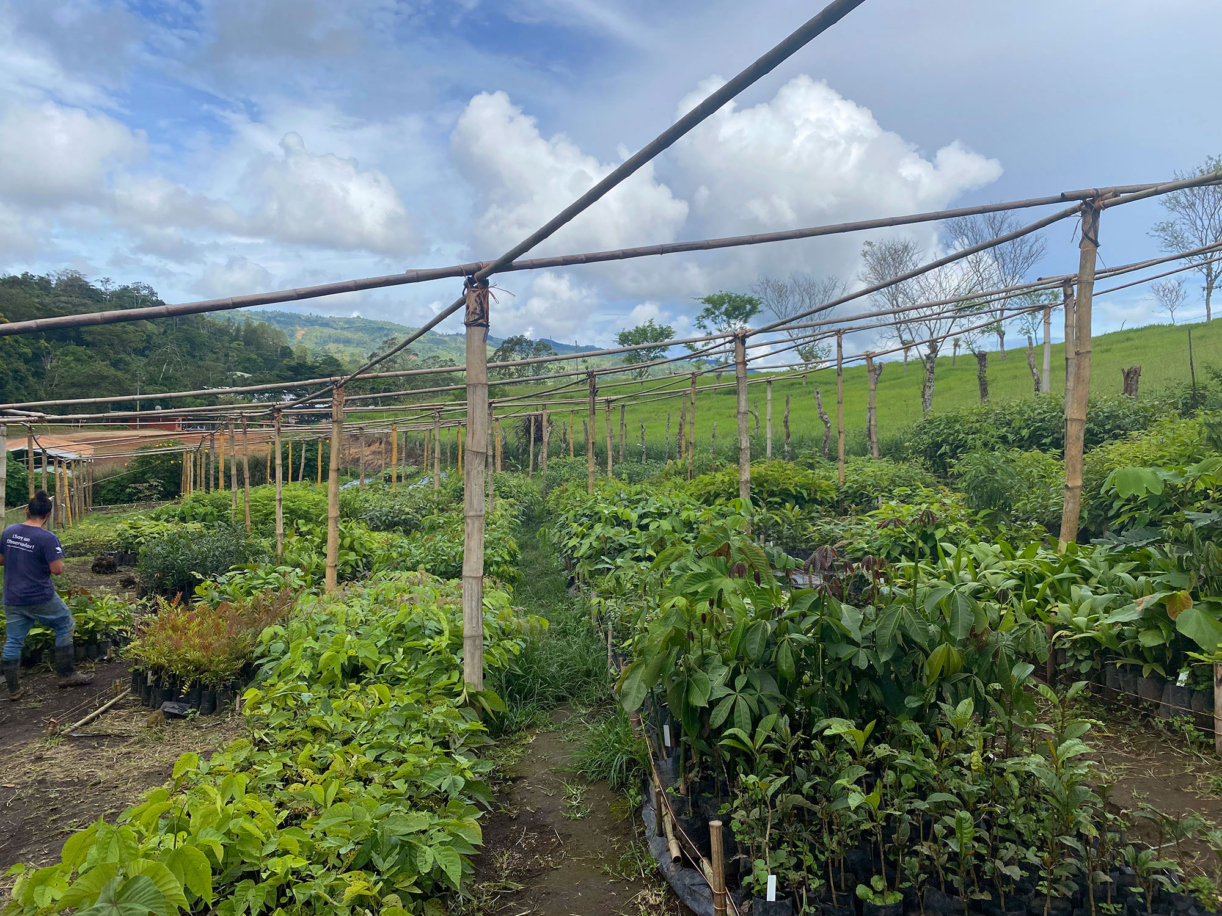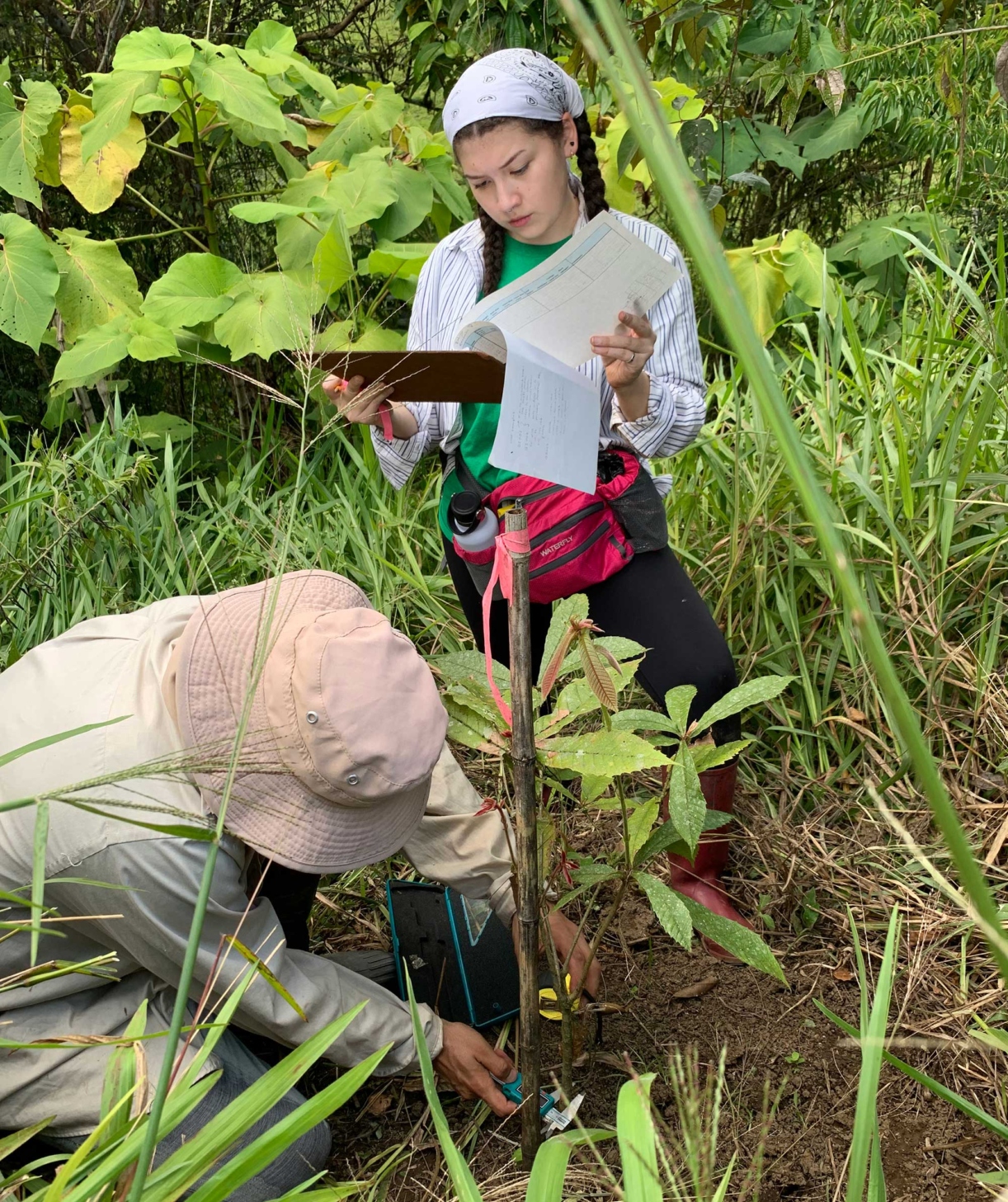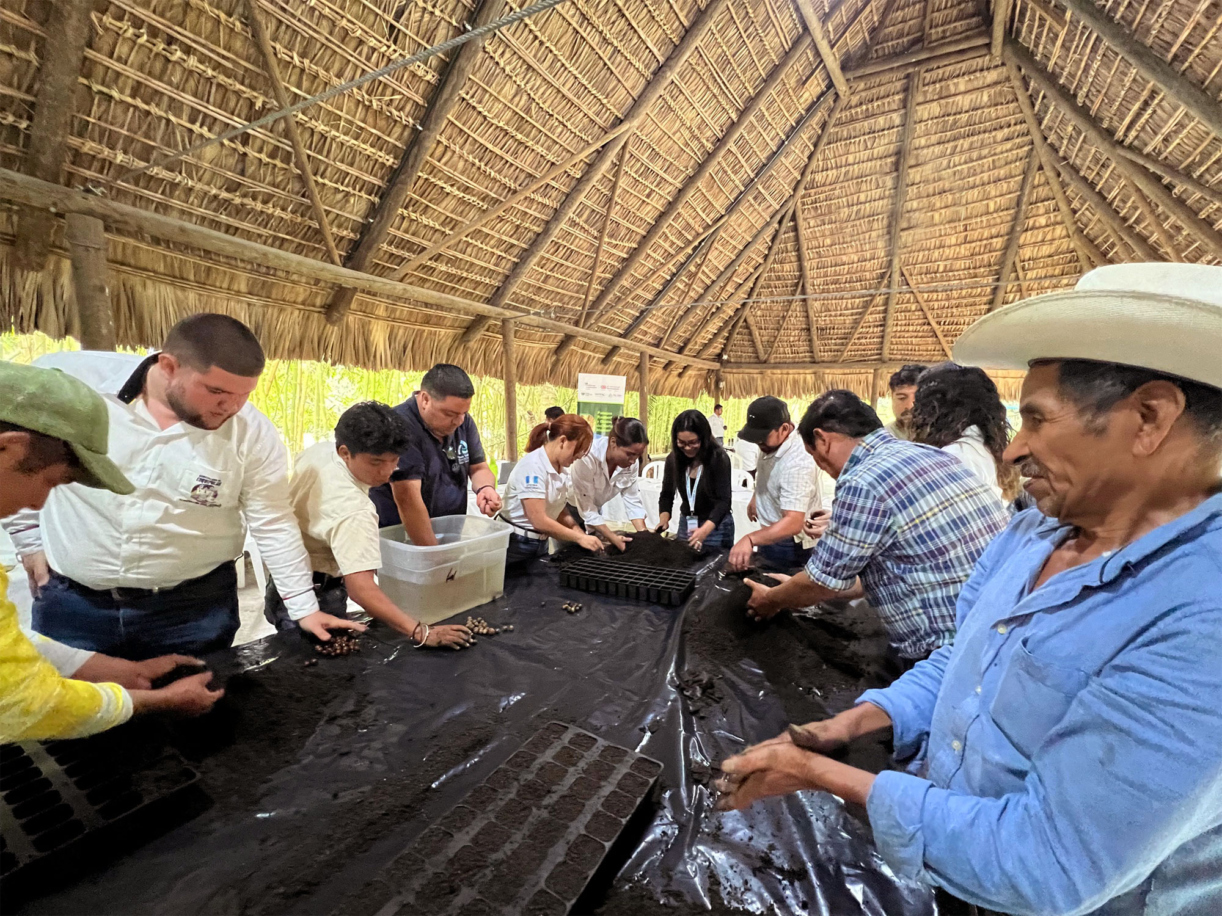
Many rare and threatened oak species grow in isolated locations.
In a rugged mountain range in western Mexico, south of Puerto Vallarta and 2,000 feet above sea level, a small, picturesquely twisted tree holds onto a steep, rocky slope. Its lance-shaped leaves don’t immediately identify it as an oak, but its acorns do.
This endangered oak species, Quercus cualensis, has lived for thousands of years in a warm, moist, mountainous forest among pines and junipers. Now it faces human threats such as mining, road-building, and arson-caused forest fires, at the same time that climate change is increasing the risk of destructive hurricanes and reducing the tree’s native habitat. None of its very small native range is protected from development.
Preserving the future of such rare oak trees is the goal behind the recent Conservation Gap Analysis of Mesoamerican Oaks, conducted by researchers at The Morton Arboretum with the help of a broad range of collaborators.
“It addresses gaps in our knowledge and gaps in our conservation,” said Kate Good, the lead author of the study and the Arboretum’s global tree conservation research program manager. “We have so many threatened species, but we have limited time and money. How can we focus our time and efforts? One important way is to share information.”

Propagating species that are rare and threatened in the wild can help preserve their diversity and provide them to botanic collections for a safe haven.
The project’s report lists, describes, and assesses the prospects for 59 rare and threatened species of oaks in Mesoamerica, the region from the U.S.–Mexico border south through Panama. Mesoamerica is especially important for conservation because so many different oak species have evolved there. Although 91 oak species are native to the United States, 164 species are known to be native to Mexico, with more in Belize, Guatemala, Honduras, Nicaragua, Costa Rica, El Salvador, and Panama. “Mesoamerica is a global hot spot for oak biodiversity,” Good said.
Many of the threatened oak species grow in only a few places, with just a handful of trees at each site. Their habitats vary widely.
For example, several species are native to moist, mountainous cloud forests, where oaks such as the endangered Quercus insignis can tower 150 feet tall, according to Maricela Rodríguez-Acosta, PhD, Mexico and Central America coordinator of the Global Conservation Consortium for Oak in Puebla, Mexico, and a co-author on the report.
“With abundant humidity, trees can grow very large,” she said. “But then on the other side of the mountain it can be desert, and it is completely different. Most of the oaks there are short trees or just shrubs.”

Moist conditions in Mexico’s cloud forest allow some rare oak species to grow very tall. Photo by Maricela Rodríguez-Acosta.
The gap analysis assessed 32 oak species that are classified as critically endangered, endangered, or threatened by the International Union for the Conservation of Nature, as well as 27 species classified as data deficient, meaning that so little is known about them that their conservation status can’t even be determined.
Oaks are a special concern of The Morton Arboretum’s science and conservation programs because they are important ecologically. The 430 known species of oaks worldwide, ranging from scrubby shrubs to majestic tall trees, are a source of food and shelter to many kinds of animals. Many oak species are considered keystone organisms on which entire ecosystems depend. Yet an earlier Arboretum study with the IUCN found that an estimated 31% of the world’s oak species are threatened with extinction.
To face these threats, the Arboretum operates both the Global Conservation Consortium for Oak and the Center for Species Survival: Trees.
Gathering information on Mesoamerica’s threatened oaks for the gap analysis required the work of many collaborators, and it was no easy task.
Rodríguez-Acosta recalled one group of botanists who took more than two hours to hike less than 2 miles in rocky terrain in temperatures over 120 degrees, in order to locate and take samples of an isolated population of one rare oak.
“For some of these rare species, there may be just one or two people who know about them,” Good said. “They may be researchers or they may be local people working to protect these trees and their habitats. They’ve been collecting information, but it isn’t necessarily shared in academic papers.” She made several trips to the region to interview local people and bring them together to share knowledge.

Preparing the Gap Analysis of Mesoamerican Oaks required many collaborators to locate, measure and sample trees in remote locations.
“The first priority for oak conservation is protecting the species in the wild,” Good said. But another important goal of the analysis was to learn how many of these rare trees are in the safe refuge of botanical collections.
“These species are facing so many threats in the wild that we also need to create a backup reserve by planting them in safer places,” she said. Such ex situ plantings, often in botanical gardens, can give rare species an important cushion against habitat loss and catastrophe.
Good pointed to Quercus tuitensis, which has a very small localized range near the coast of western Mexico. “A single hurricane could wipe out that species,” she said. No specimen of Quercus tuitensis is protected in any collection.
In fact, the analysis found that over a third of the threatened or understudied oak species in Mesoamerica are not grown in managed botanical collections anywhere in the world. Just one species, the critically endangered Quercus graciliformis, has been planted at The Morton Arboretum, which has a very different climate than the habitats of most Mesoamerican oaks.
“In the face of climate change and habitat degradation, there’s an urgent need to increase the number of Mesoamerican oaks in collections in their native countries,” Good said.
It’s not possible to save the genetic diversity of oaks by saving their seeds, because acorns don’t keep. “You have to plant the acorns and grow the trees in order to preserve their genes,” she said.
One of the needs identified in the report is more propagation of rare oak species, both for replanting in the wild and for botanical collections. The Arboretum’s Global Tree Conservation Program has helped some conservationists in Mesoamerica begin planting acorns and growing oak seedlings, and is propagating some in its own greenhouses.
Another need is public outreach, because the cooperation of local people is key to conserving trees. “Often when I go speak to people, it is very moving,” Rodríguez-Acosta said. She recalled a nursery owner in a village in Guatemala who thanked her for visiting to explain how he and his neighbors could help in the conservation of local oak species. “He said he would like to conserve the oaks to give something to the children, so they have something from the forest.”

The recent report on endangered oaks in Mesoamerica can lead to local conservation efforts such as propagating rare species of trees. Photo by Maricela Rodríguez-Acosta.
“This analysis is a crucial step toward facilitating partnerships and spurring conservation action to help protect threatened Mesoamerican oaks before time runs out,” said report co-author Silvia Alvarez-Clare, PhD, director of the Arboretum’s Global Tree Conservation Program. Gaps are opportunities.
And there is good news for Quercus cualensis, the little tree that grows on rocky slopes. “It’s such a pretty tree, and it came out in the gap analysis as one of the highest priority species for conservation,” Good said.
Recently, some acorns were collected and successfully propagated into seedling trees. That means this rare species can be grown and preserved in botanical collections, and gives conservationists more hope for pulling it back from the brink. If governments, nonprofits such as the Arboretum, and local people who care about trees can make the most of the information in this report, other oaks can get the same chance.